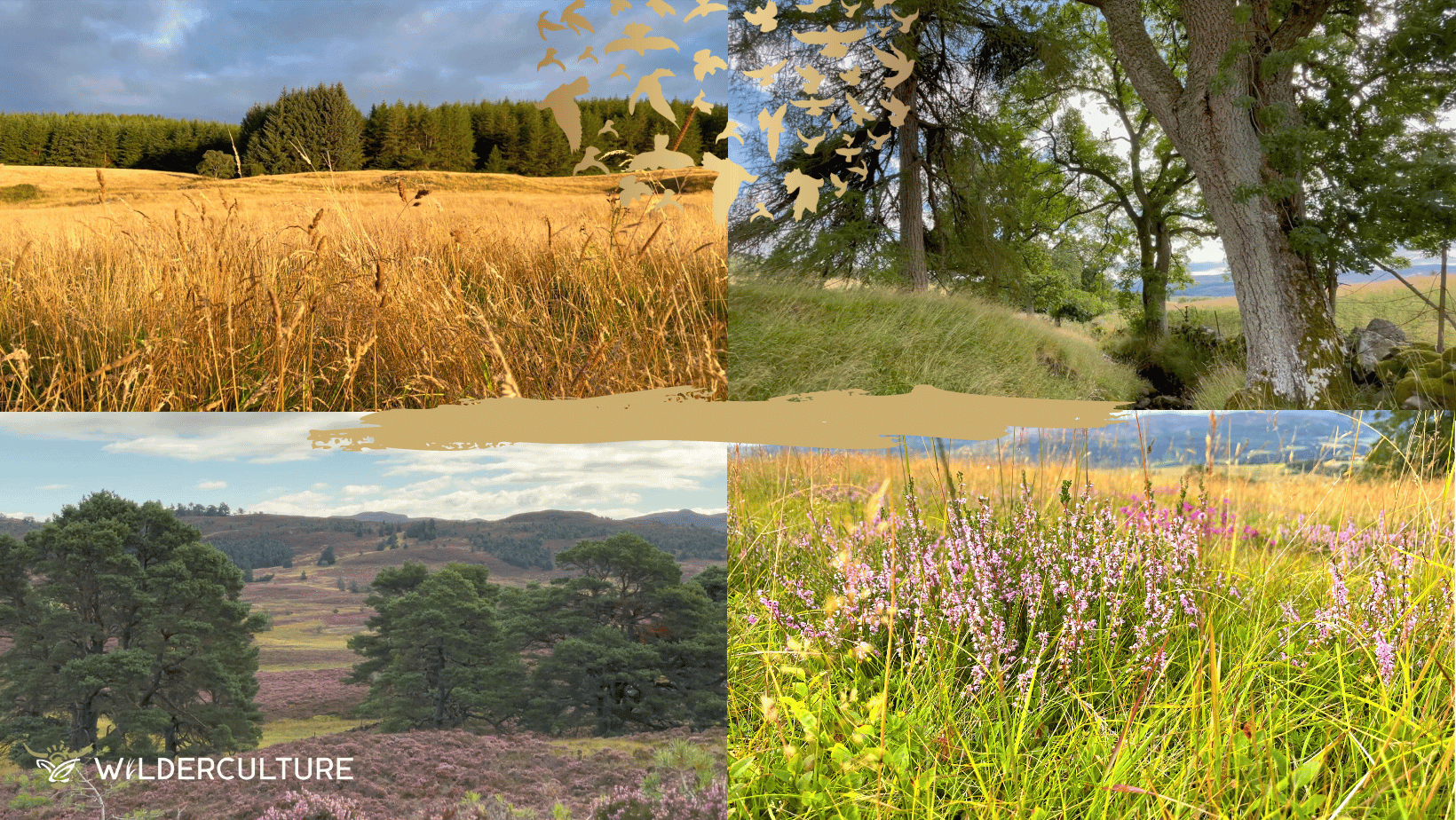
Milton of Tulliemet Jan ’23
Milton of Tulliemet
By Georgia Wingfield-Hayes
If you ask most people, who know about such things, What’s it like keeping sheep? You’ll probably hear some dark humour along the line of:
“Sheep are always looking for a way to die.”
The reality is that sheep farming is rife with problems from liver fluke to foot rot, sheep basically are hard work.
So when decision makers at Tulliemet were looking to make the shift from a conventional hill farm of set stocked sheep and cattle, to a regenerative farming system? One of the questions was, do we keep the sheep and if so which breed?
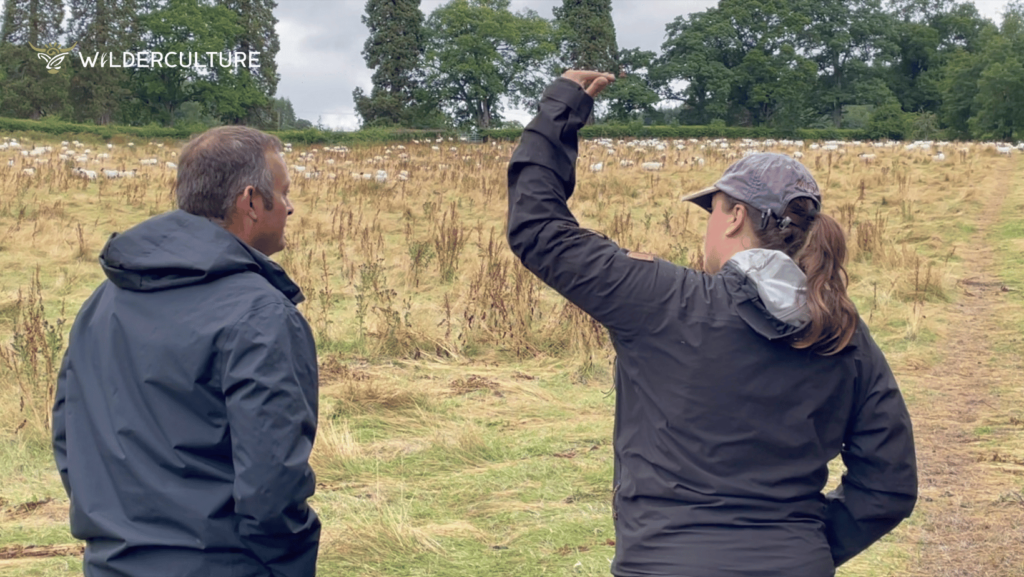
Tulliemet Farm
Tulliemet Farm is one of two home farms on the 145,000 acre Atholl Estate in Perthshire. Tulliemet – 6000 acres, sits towards the southern end of the estate, which reaches north into the Cairngorms National Park.
The farm comprises an array of habitats including extensive grasslands; managed woodland; a high hill comprising a dry heath, that was managed for walked-up grouse shooting until 5 years ago (a driven grouse shoot existed until about 50 years ago); and a lower heathland that includes beautiful remnants of old growth Scots Pine woods.
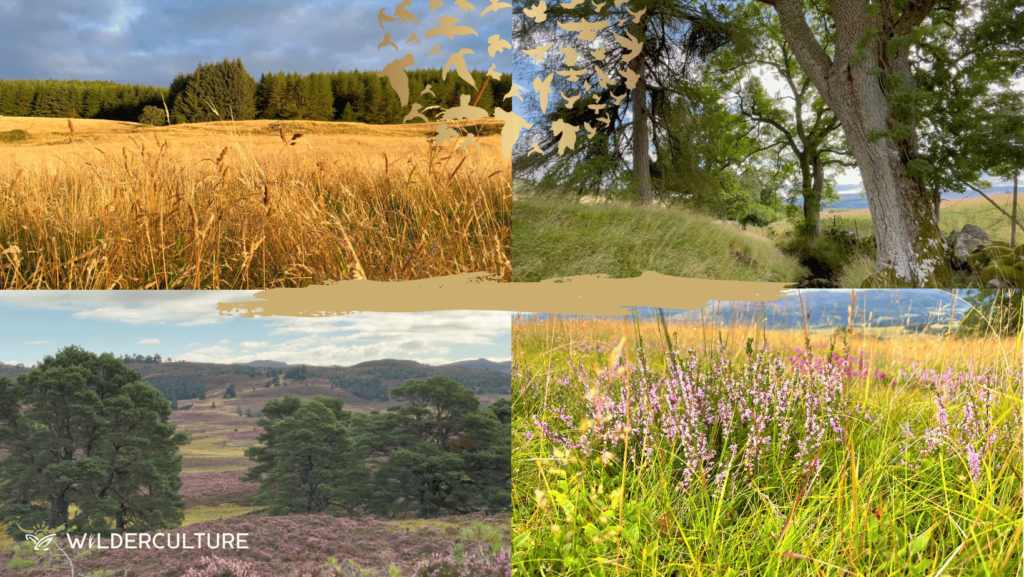
Estate owner Jane Bonsor, when she inherited Tulliemet, wanted to find a more financially viable future for the estate. It was by no means making a profit under the conventional farming system. Not long after, Rural Manager Julian Clarke heard about regenerative farming and then met Caroline Grindrod of Wilderculture. He suggested using this approach at Tulliemet and Jane was enthusiastic from the start.
Jane, Julian and Caroline then found May and Tom McIntyre, who now run the livestock operation and complete the team.
Historically the farm had both sheep and cattle, and it was decided that this would continue, just in a very different way. The continental cattle from the old system, deemed unfit for this new approach, were sold two years ago. Then Tom and May moved to Tulliemet in February 2022, just as 1200 white-faced park ewes went to market, leaving the farm with nothing but 500 Scottish black-face ewes.
“We wanted to give the farm a rest” May told me, “It had been really heavily set-stocked.”
“Yes, it was bizarre, it was like a kitchen table all over the farm,” added Tom, “It was so hungry looking.”
Since the livestock were sold and the land had a chance to rest, the grass has grown long across the farm, and Tom and May have been getting used to working in this very different environment.
The Sheep
Scottish black-faced sheep are a hardy highland breed, but Tom still had reservations about how they would cope in the long grass, which will remain a feature of the farm with the new planned grazing system.
“I would say the sheep have out performed my expectations,” said Tom. “They’ve done exceptionally well. The lambs weren’t born till May, but they’ve surpassed what I thought they would do in terms of growth rates on this system. It’s because we’ve got a structure in place of rotating the fields around, so they don’t come back to the same field for at least 45 days. As a result the ground is really clean.”
May picks up the theme;
“We worm our ewes twice a year and our lambs have only been wormed once. Which is minimal in terms of intervention. We decided to do faecal worm egg counts on the lambs, we’d never done that before, but they looked clean and we didn’t want to worm them if it wasn’t necessary. The test came up with a count of 700, so we wormed them, and 2 weeks later we did another count and it was down to 210. Then we did another test six weeks later and the egg count was just 35. This was a huge insight! Caroline had told us, don’t go in with a treatment just for the sake of it. She was right!”
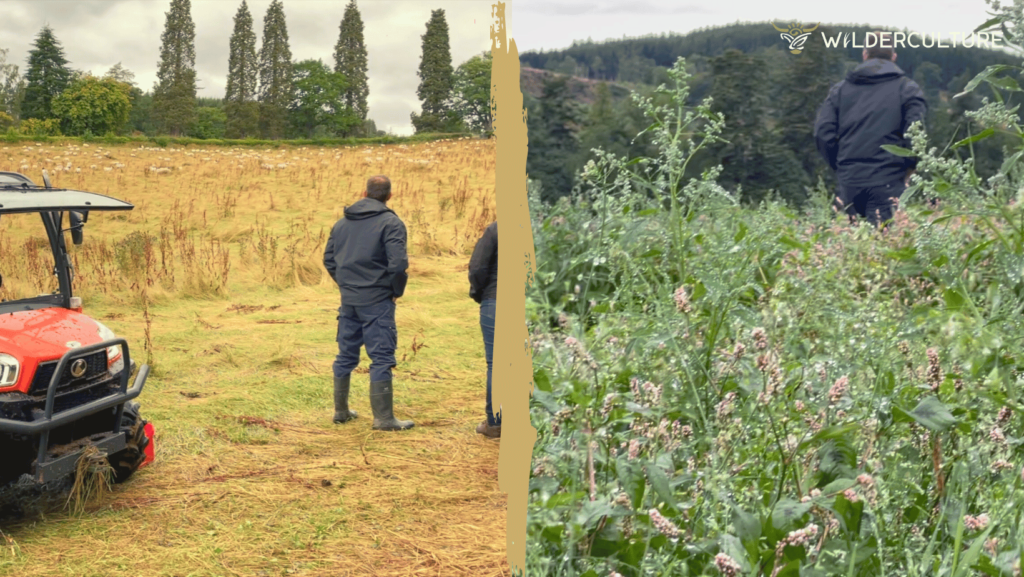
“The lambs had been grazed on rotation herbal leys at that point,” adds Tom. “Plants like chicory act as a natural wormer. If you work with a rotation and have constant clean food in front of the sheep, it really helps.”
“We’ve not had a lot of foot problems either, for the same reasons,” said May. “The fields get time for the bacteria to reduce and disappear.”
“Nature is definitely helping us,” said Tom. “We’re learning to work with nature instead of against her.”
The Cattle
More recently May and Tom have sourced Aberdeen Angus cattle from two other farms. 20 in-calf heifers from one, and 30 in-calf cows of varying ages from another. They arrived in October and November this year, and are now happily outwintering, learning to forage for the grasses under the snow.
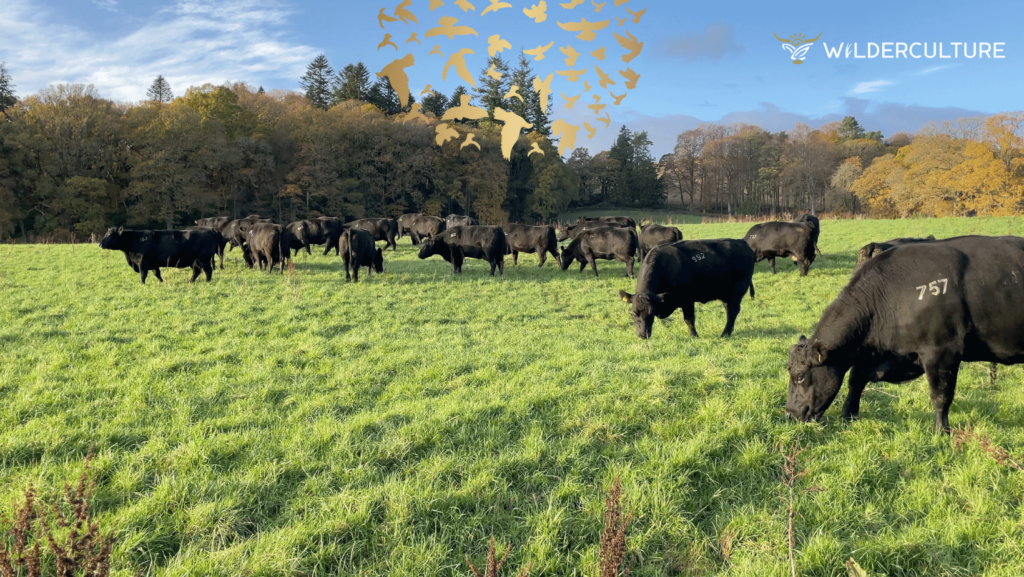
The Mindset Shift
Tom and May have been working in full partnership for around 10 years now and they make an excellent team. Tom has a lifetime’s practical experience farming, while May is good with monitoring, recording and bookkeeping.
“I always knew I did things differently,” said Tom, reflecting on his personal journey towards working in regenerative agriculture. “Working with Wilderculture has given meaning and structure to what I’ve been trying to do for many years on other farms.”
There are often things that take Tom by surprise.
“One wet morning I watched a cow out in the field eating rushes. I’ve never seen a cow eat rushes before,” he said. “Then there were these massive dockins (docks) which we think of as a really problematic weed, but then the sheep and lambs stripped all of the leaves. Dockins have deep roots, so bring minerals from deep in the soil which is a huge benefit to the animals. It’s getting your mindset around these different ways of looking at things.”
Recently Tom filmed fields in the morning dew, where you could see it was covered in spiderwebs.
“Which is brilliant,” recounted May, “because the spiders will catch and eat flies which otherwise cause problems in your sheep, etc, etc. So it’s really exciting, the whole thing is a fantastic learning curve when you stop using sprays and artificial fertilisers on the land.”
“So now we go into a field and see the tall grasses and all sorts of different plants,” continued May, “and whereas before you might think this is just a mess with weeds, you are instead thinking, I wonder what this is and what that does.”
The Future
“The vision,” said May, “is to get a further 50 cows in September next year and keep all the ewe lambs that were born this year, so that we get the stock on the farm up to 100 cows and 750 ewes, and then see how the farm sits with that. We will also carry on reducing medicines like wormers as much as possible, as the health of the farm builds.”
Under Caroline’s direction they are also looking at reducing the minimum recovery period of the pasture’s from 45 to 30 days, in spring and early summer, because it is recovering so fast and so well.
“This is incredible,” Tom told me. “This will give a conventional farm a real run for its money.”
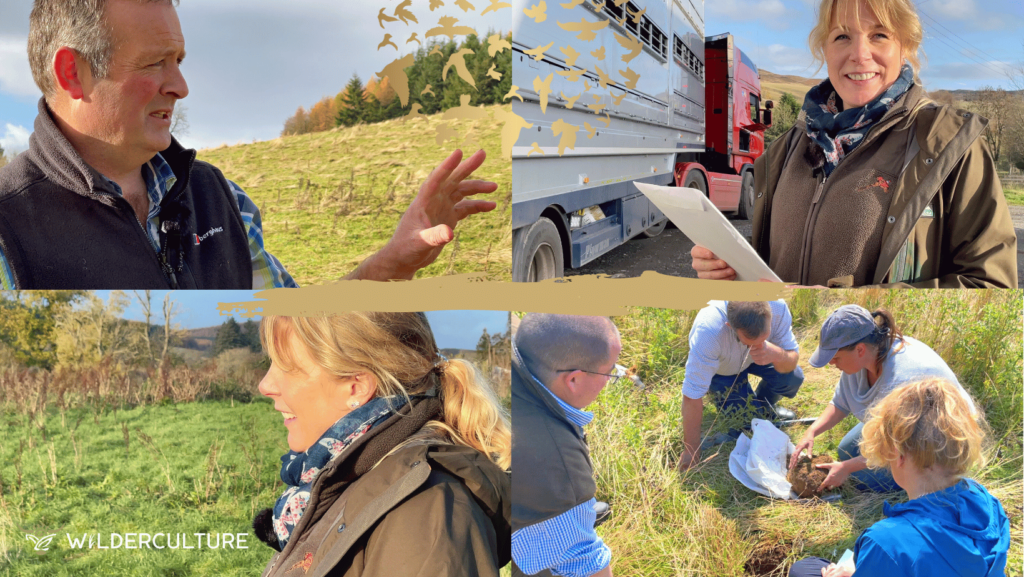
There are still lots of things to work on at Tulliemet. Tom is unsure if they will run the sheep and cattle together, or if the sheep will follow the cattle, following a rest period. But then this is the nature of a regenerative system, being responsive to what is working or not working, and making and remaking decisions accordingly.
I ask Tom whether he feels that the farm could potentially compete with a conventionally run operation in terms of production. “That wasn’t my feeling to start with when we first looked at the project. But now, with what we have seen so far and understanding what a powerful tool the grazing planning is… you know some fields have only got cattle in them for four days, then the gate is shut and the ground is cleaning up and growing grass. It’s so basic and so clever.”
Caroline is keen that the high matrix of upland habitats will eventually be brought into the grazing plan, as some animal impact in those habitats will help biodiversity. Horses and pigs might be included in the mix. For now the heath is recovering really well, with lots of blaeberry and tree regeneration in the pine woods stands. In the absence of sheep and with deer numbers being controlled young trees are finally getting a chance to grow. This is good news because the remnants of old growth pine forest, which currently have no young understory to replace the mature trees.
“The tree regeneration is mostly rowan and birch so far,” estate manager Julian told me, “but the Scots pine will come in time.”
There is also now a resident beaver on the farm. Tom is not convinced about the presence of beavers, his concern is that they will cause the loss of good grazing land. May however, is more curious.
“We felt like that about the dockins in the field,” she said. “We went through a whole cycle around to seeing that they have a purpose. Maybe with the beavers we just haven’t learned how they are going to help yet.”
A Song of Hope
The tall grasses and the presence of a multitude of different plant species within the sward, greatly helped in the drought in 2022. Tom told me, “When everyone else’s land around us was burning up, ours was fantastic. You could dig down and almost feel moisture. We had no problem with drought at all.”
Talking to Tom, May and Julian, I get a real sense of the deep connection they have to the land and animals with whom they work. They are all on a learning curve in this regenerative venture and they seem to be thriving on it.
“I used to be a really conventional in my thinking.” Julian tells me. “Even five years ago, I probably wouldn’t have gone for this change, but now seeing the positive outcomes everyday, I wish we had done this 10 years ago.”
Milton of Tulliemet is Wilderculture’s largest and most exciting project to date, Caroline reflected on her experience of working with the team so far.
“Jane, Julian, Tom and May have been incredible to work with. They’re open-minded, willing to take risks and totally committed. I always look forward to our weekly decision-making meetings where Tom and May share new insights and we can collectively work out how best to overcome challenges.”
We look forward to sharing the progress of the project over the years to come.


No Comments